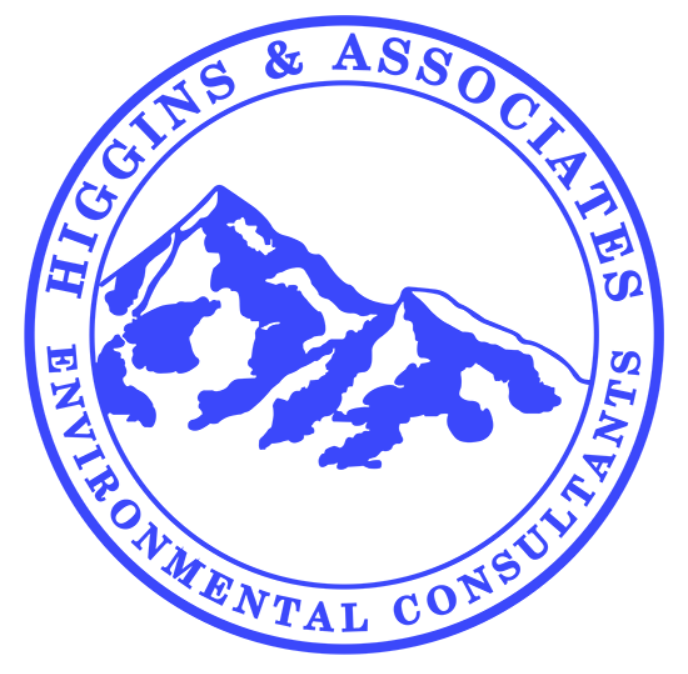ASHE ICRA 2.0 and the Future of Healthcare Construction Safety
Jun 27
ICRA 2.0 isn’t just a revision. It’s a redefinition of how infection risks are managed in active healthcare construction.
Released in 2022 by the American Society for Health Care Engineering (ASHE), this updated Infection Control Risk Assessment (ICRA) framework introduces stricter containment protocols, improved air quality monitoring, and clearer guidance for high-risk renovation projects.
Healthcare systems responded quickly. By 2023, a survey by STARC Systems found that 67% of facilities had adopted ICRA 2.0 as their new standard for infection prevention during construction.
Now, with more projects happening in occupied care environments, staying current on ICRA 2.0 requirements is no longer optional. It is essential.
In this post, we’ll unpack what’s new, why it matters, and how our ASHE-aligned ICRA 2.0 training helps project teams stay compliant, confident, and construction-ready.
Released in 2022 by the American Society for Health Care Engineering (ASHE), this updated Infection Control Risk Assessment (ICRA) framework introduces stricter containment protocols, improved air quality monitoring, and clearer guidance for high-risk renovation projects.
Healthcare systems responded quickly. By 2023, a survey by STARC Systems found that 67% of facilities had adopted ICRA 2.0 as their new standard for infection prevention during construction.
Now, with more projects happening in occupied care environments, staying current on ICRA 2.0 requirements is no longer optional. It is essential.
In this post, we’ll unpack what’s new, why it matters, and how our ASHE-aligned ICRA 2.0 training helps project teams stay compliant, confident, and construction-ready.
ASHE ICRA 2.0: A New Standard for Safer Healthcare Construction
ICRA 2.0, or the updated Infection Control Risk Assessment framework, builds on the original ICRA model first introduced in the 1996 edition of the Facility Guidelines Institute’s Guidelines for Design and Construction of Hospital and Healthcare Facilities. While the initial version was groundbreaking in introducing proactive infection control planning during construction, ICRA 2.0 reflects over two decades of field experience, new data on bioaerosol risks, and lessons from the COVID-19 pandemic.
This updated version was developed by ASHE (the American Society for Health Care Engineering), a trusted authority in healthcare facility guidelines, in collaboration with infection prevention experts, contractors, and healthcare professionals. The goal? A more comprehensive, enforceable process to protect patients, staff, and workers in active care environments.
Some of the most significant changes include:
This updated version was developed by ASHE (the American Society for Health Care Engineering), a trusted authority in healthcare facility guidelines, in collaboration with infection prevention experts, contractors, and healthcare professionals. The goal? A more comprehensive, enforceable process to protect patients, staff, and workers in active care environments.
Some of the most significant changes include:
- New Class V containment: A new precaution class that addresses high-risk, long-duration projects in highly sensitive areas. This class requires full enclosures, negative air machines with HEPA filtration, and real-time air pressure monitoring.
- Expanded environmental concerns: In addition to infection control, ICRA 2.0 now includes considerations for noise, vibration, and air quality—factors proven to impact patient recovery and staff performance.
- Increased team collaboration: The updated framework emphasizes a truly multidisciplinary ICRA team, involving infection preventionists, facility managers, project managers, and environmental services from the start. This ensures risks are identified and mitigated collaboratively.
ICRA 2.0 not only updates the risk classification matrix but also formalizes a five-step planning process that prioritizes consistency, documentation, and communication across all stakeholders.
ASHE’s official ICRA 2.0 Toolkit includes the updated process guide, risk matrix, signage examples, and permit log templates, making it easier for facilities to implement consistent protocols across every project.
Whether you're managing a renovation in a pediatric unit or installing new equipment in an ICU, ICRA 2.0 is the new benchmark for safe and compliant healthcare construction.
What Makes ASHE ICRA 2.0 Training the Gold Standard
When it comes to infection prevention during healthcare construction, the American Society for Health Care Engineering (ASHE) sets the standard, and its endorsement carries serious weight.
As the healthcare arm of the American Hospital Association, ASHE is the recognized authority for safe facility planning, design, and maintenance in clinical settings. So when they updated the ICRA framework, their training guidelines became the benchmark for what compliant, up-to-date education should look like.
HigginsEDU is an ASHE Preferred Education Provider, offering ICRA 2.0 online training that reflects the latest containment strategies, risk protocols, and interdisciplinary planning requirements. That status isn’t just a badge, but a recognition that the course aligns with ASHE’s most current guidance and standards.
We’ll dive deeper into what makes this training uniquely effective, and how to get your team certified at the end of this post.
As the healthcare arm of the American Hospital Association, ASHE is the recognized authority for safe facility planning, design, and maintenance in clinical settings. So when they updated the ICRA framework, their training guidelines became the benchmark for what compliant, up-to-date education should look like.
HigginsEDU is an ASHE Preferred Education Provider, offering ICRA 2.0 online training that reflects the latest containment strategies, risk protocols, and interdisciplinary planning requirements. That status isn’t just a badge, but a recognition that the course aligns with ASHE’s most current guidance and standards.
We’ll dive deeper into what makes this training uniquely effective, and how to get your team certified at the end of this post.
Why Healthcare Renovation Projects Require Stricter Guidelines
As healthcare buildings age and expand, more and more facilities are choosing to renovate existing spaces rather than build from the ground up. These renovations often happen in active care environments—ICUs, emergency departments, surgical suites—where even minor disruptions can pose serious risks to immunocompromised patients.
Unlike new construction, renovations require close coordination with hospital operations, especially when working in or near occupied areas. Dust, noise, and vibration aren’t just inconveniences; they can directly impact healing, increase infection risk, and strain clinical workflows.
ICRA 2.0 responds to this shift with more stringent controls and clearer protocols for managing risk. The framework reinforces the importance of proactive planning and containment, especially for projects that occur near vulnerable populations or high-risk departments.
By formalizing precaution classes like Class V and emphasizing pre-project collaboration among the full ICRA team—including infection preventionists, facility managers, and project leads—the new guidelines help ensure that no step is overlooked and no patient is put at unnecessary risk.
Healthcare Construction Trends Driving ICRA 2.0 Adoption
The push to adopt the ASHE ICRA 2.0 didn’t happen in a vacuum. It’s a direct response to the evolving realities of modern healthcare construction.
Post-pandemic, there’s heightened urgency around air quality, contamination control, and documentation. Healthcare facilities are under more scrutiny than ever to show that they are proactively protecting patients, even during disruptive activities like renovations. The COVID-19 crisis highlighted the need for better airborne pathogen mitigation, and those lessons are now embedded in ICRA 2.0.
Modular containment systems are also changing the game. Temporary walls, reusable rigid panels, and mobile enclosures are now common tools on healthcare job sites. These solutions make it easier to set up Class IV or Class V containment zones quickly and with minimal disruption to hospital operations.
There’s also a growing emphasis on sustainability and risk documentation. As healthcare facilities strive to meet ESG goals and improve reporting practices, ICRA 2.0 supports these efforts with formalized planning, permit logs, and clearer guidance on documenting risk mitigation strategies.
Altogether, these trends are reshaping expectations for how renovation and construction projects are managed in active care environments. And ICRA 2.0 has emerged as the new baseline standard to meet them.
Containment & Air Quality Best Practices in Active Healthcare Facilities
Effective containment isn’t just about sealing off a space. It’s about protecting patients from invisible threats like dust, bioaerosols, and other airborne contaminants that can lead to healthcare-associated infections (HAIs). ASHE ICRA 2.0 reflects the growing body of evidence that shows how crucial air quality and environmental controls are during hospital construction.
Some of the best practices now expected on job sites include:
Some of the best practices now expected on job sites include:
- Negative pressure zones: These are essential for preventing contaminated air from migrating into clean areas. When properly designed and monitored, negative pressure helps keep dust and airborne pathogens isolated within the work area.
- HEPA scrubbers and filtration units: High-efficiency particulate air (HEPA) filtration is no longer optional for high-risk projects. HEPA scrubbers continuously clean the air within containment zones, capturing particles as small as 0.3 microns with 99.97% efficiency.
- Rigid reusable containment panels: Instead of traditional plastic sheeting, more facilities are using modular containment panels. These provide stronger seals, improved durability, and less disruption to hospital operations. Many models include built-in doors, pressure gauges, and transparent panels for easy oversight.
- Digital air pressure monitoring and alerts: Real-time pressure monitoring tools are becoming standard. These systems track pressure differentials across barriers and send immediate alerts if conditions fall out of compliance. This level of control is critical for maintaining safe and consistent containment.
- Use particle counters to test the efficiency of the portable HEPA Filtered Units when discharging exhaust air in the healthcare facility to create negative pressure.
- Need to understand how to properly set up and maintain a containment anteroom.
These practices align with the CDC’s Environmental Infection Control Guidelines, which outline evidence-based precautions for construction, renovation, and maintenance activities in healthcare facilities.
Together, these tools form the backbone of modern infection control on healthcare construction sites. By applying these best-in-class methods, project teams can meet ICRA 2.0 expectations while reducing risk and maintaining hospital functionality.
Planning with the ICRA 2.0 Process Guide & Forms
One of the most important shifts in ASHE ICRA 2.0 is the formalization of the planning process. What was once an informal or facility-specific protocol is now a standardized, five-step method that ensures consistency and accountability across all projects.
Here’s how the process works:
Here’s how the process works:
- Define the Activity: Start by identifying the specific type of construction, renovation, or maintenance work being performed. This helps determine potential disruptions and affected zones.
- Identify the Risk Group: Assess the patient population in the area. Are you near a NICU, oncology unit, or transplant center? Different patient groups carry different levels of vulnerability to airborne contaminants.
- Match to a Precaution Class: Using the updated risk matrix, match the activity type and risk group to one of the five ICRA precaution classes. This determines the required containment protocols and infection control measures for the job.
- Mitigate the Risk: Plan and implement appropriate controls: negative air machines, HEPA filtration testing, rigid containment barriers, anterooms, and more. ICRA 2.0 offers clearer guidance on selecting the right tools for each project class.
- Document and Monitor: Track every step. From permit logs to signage and air pressure monitoring, the documentation process is no longer optional. Facilities must show proof that protocols were followed and that patient safety was prioritized from start to finish.
To support implementation, ASHE provides a downloadable ICRA 2.0 process guide, forms, project signage templates, and containment permit logs. These resources are essential for staying organized, communicating risk levels to staff, and maintaining regulatory compliance throughout the project lifecycle.
Common Questions About ICRA 2.0
Who needs ICRA 2.0 training on a job site?
Anyone working in or around a healthcare construction containment, whether managing the project or working inside the barrier, needs ICRA 2.0 training. HigginsEDU offers two ICRA courses tailored to different roles: one for infection prevention and construction professionals, and another for field workers who need day-to-day compliance training.
How is ICRA 2.0 different from earlier versions?
ASHE ICRA 2.0 introduces a new Class V containment level, mandates digital air pressure monitoring, HEPA filter testing, and requires stronger documentation. It also expands environmental considerations (noise, vibration, etc.) and formalizes a five-step risk assessment process with clearer team roles and responsibilities.
Does ICRA 2.0 apply to small projects or just major renovations?
Yes, even minor maintenance or repair work can pose infection risks in sensitive care environments. Under ICRA 2.0, all projects are evaluated using the same standardized risk matrix, ensuring that precaution levels are matched to the patient population and work type, not just project size.
What documentation is required for compliance?
Facilities must track and store several documents, including completed ICRA 2.0 forms, containment permit logs, signage, and air pressure monitoring records. These documents must be accessible to infection control staff and AHJs for audits or inspections.
How often should ICRA training be renewed?
While ASHE does not currently mandate a specific renewal interval, many facilities require recertification every 1–2 years, especially when there are updates to protocols or team turnover. Staying current ensures everyone on site is aligned with the latest best practices.
Can ICRA 2.0 help with CMS or Joint Commission compliance?
Yes. Proper use of ASHE ICRA 2.0 protocols can support broader accreditation and regulatory compliance efforts. Both CMS and The Joint Commission expect documented evidence of infection control measures during construction, and ICRA 2.0 provides a clear structure for meeting those expectations.
Lead the Future of Infection Prevention With ICRA 2.0 Training
Construction safety isn’t just about barriers and air scrubbers. It starts with informed people. And as healthcare construction projects move deeper into active care environments, the knowledge gap can be the biggest risk of all.
ASHE ICRA 2.0 sets a new bar for planning, containment, and compliance. To meet it, your team needs more than a toolbox. They need training that’s built for today’s challenges.
HigginsEDU offers two ASHE-aligned courses to get you there:
ASHE ICRA 2.0 sets a new bar for planning, containment, and compliance. To meet it, your team needs more than a toolbox. They need training that’s built for today’s challenges.
HigginsEDU offers two ASHE-aligned courses to get you there:
- ICRA-IQ: A deeper dive for infection preventionists, healthcare leaders, and construction pros in designing, testing, and operating healthcare construction containments.
- ICRA Construction Essentials: A practical course for professional trades workers and managers working inside healthcare contaminants.
When the standards rise, so should your training.



